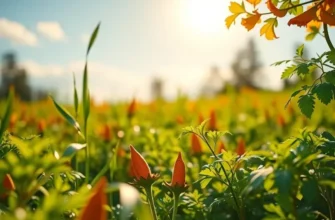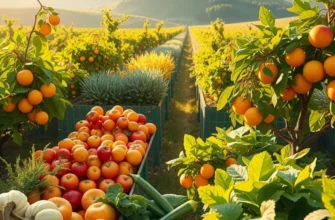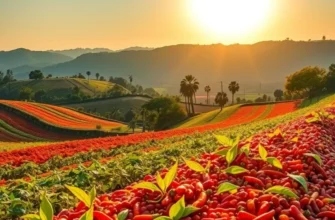Honey has been cherished across cultures not just for its sweetness but for its intricate connection to nature and tradition. As food enthusiasts and the culturally curious dive into the nuances of global culinary practices, the traditions surrounding honey stand out as particularly fascinating. Each region offers distinct flavors affected by local flora, weather, and age-old harvesting techniques, turning honey into an emblem of cultural heritage and food artistry.
The Golden Elixirs of Europe: Honey’s Rich Heritage

Across Europe, honey is celebrated not just as a sweetener but as a culinary cornerstone. In the UK, while Manuka honey originates from New Zealand, its growing popularity has inspired British beekeepers to innovate. They adapt their hives to mimic the floral conditions of Manuka, creating local varieties with a similarly intense, aromatic profile. This honey is not just for health enthusiasts; it’s a star ingredient in modern British pastries, adding depth and earthy sweetness.
Journeying to Greece, thyme honey stands as a testament to the Mediterranean climate and landscape. Beekeepers harvest this honey from bees that frequent the thyme-covered hillsides, fostering a robust, herbaceous flavor. It’s a staple in Greek kitchens, drizzled over yogurt or used in traditional sweets like “melopita,” a type of honey pie. The aromatic notes of thyme honey complement the cool, creamy texture of these desserts, creating a harmonious balance.
French wildflower honey captures the essence of the diverse flora throughout the countryside. Each region boasts unique flavor profiles, all unified by a complex, floral sweetness. In Provence, lavender fields influence the taste, whereas clover and poppy dominate elsewhere. The French use wildflower honey liberally in vinaigrettes and marinades, enhancing the natural flavors of dishes with subtle sweetness. Additionally, historical records suggest honey’s role in “pain d’épices,” a spiced bread cherished since the Middle Ages.
Harvesting techniques across Europe vary, reflecting local traditions and environmental conditions. In Greece, beekeepers employ migratory practices, moving hives seasonally to chase the flowering thyme. This not only optimizes honey production but also ensures purity in flavor. France, with its varied landscapes, sees small-scale beekeepers employing traditional extraction methods to preserve authenticity. The honey is cold-pressed, maintaining its natural enzymes and scents.
Adopting mindful culinary practices can draw inspiration from these rich traditions. To explore how such thoughtful ingredient use can improve your kitchen, consider reading about effective sauce storage solutions. These cultural practices highlight how a single ingredient can encapsulate centuries of tradition and environmental diversity, bringing unique characteristics to our culinary experiences.
From the Mountains to the Plate: The Honey of Asia

Nestled high in the Himalayas, the honey hunters of Nepal embark on an ancient journey. Scaling precarious cliffs, they gather wild honey from the nests of the giant Himalayan honeybee. This wild honey is famed not only for its distinct taste but also for its potential medicinal properties. Rich in antioxidants and nutrients, it is traditionally used to treat ailments like cough and digestive issues.
In the cultural tapestry of China, honey takes on another dimension. In Traditional Chinese Medicine (TCM), honey is more than just a sweetener—it is a therapeutic agent. Honey’s soothing properties are employed to balance the body’s internal energies or ‘Qi’. It’s often combined with herbal remedies to enhance its healing effects, credited with nourishing the body’s organs and alleviating dryness.
Across the continent in Iran, saffron-infused honey offers a luxurious taste journey. Iran is the largest producer of saffron, and this spice’s golden threads woven into honey create a product that embodies both indulgence and health. The combination enhances the honey’s anti-inflammatory properties and its use often finds its way into celebratory dishes, confections, and rituals, signifying prosperity and joy.
Venturing into Southeast Asia, Jasmine blooms dance through the air of Thailand and into its honey jars. Jasmine honey, a delicacy imbued with the aroma of this cherished flower, symbolizes hospitality and warmth. It’s often presented to guests as a gesture of welcome, and its calming fragrance is believed to bring about serenity and relaxation.
These distinctive types of honey underscore the vibrant community practices surrounding beekeeping across Asia. Local beekeepers, guardians of age-old traditions, employ techniques that vary from wooden bee boxes to intricate floral selection, influencing honey’s taste and texture.
In many Asian cultures, honey also plays a pivotal role in rituals and celebrations, symbolizing life’s sweetness. It is often found in offerings during religious ceremonies and special occasions, illustrating how deeply intertwined honey is with cultural identity.
As interest in global flavors grows, these unique honey traditions offer more than just taste—they offer insight into the diverse heritage of their regions. For those curious about ingredients that enhance flavors without overwhelming them, exploring these honey traditions offers a journey into subtle yet profound taste experiences. Discover more about maximizing flavor diversity in your dishes here.
Final words
Honey embodies a connection to culture, history, and the environment, revealing the artistry inherent in its production and use. The traditions connected to honey highlight the diverse tastes and practices across the globe, each telling a story that goes beyond its sweet flavor. Food enthusiasts and culturally curious readers gain not only a taste of different regions but also insight into how these practices enrich our connection to food and nature. By exploring honey traditions, we celebrate an age-old craft that connects communities, generations, and ecosystems.








